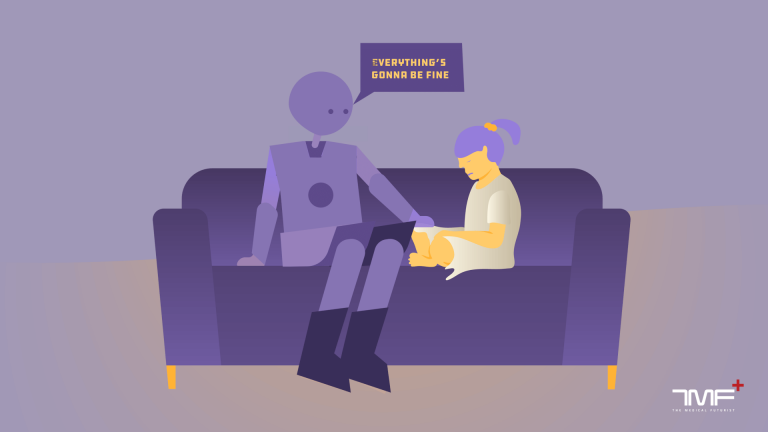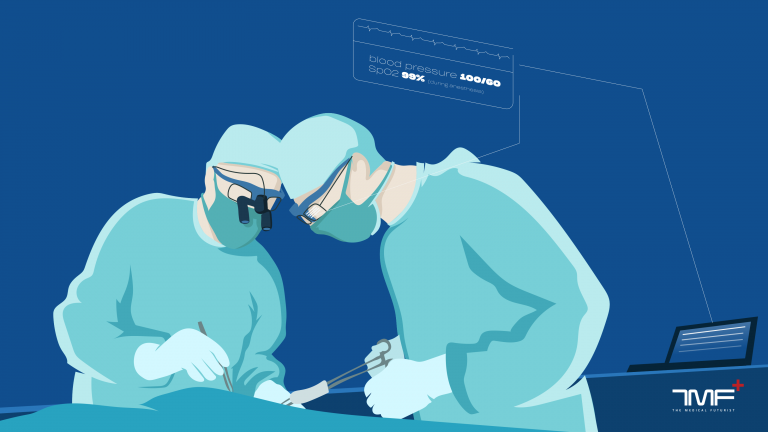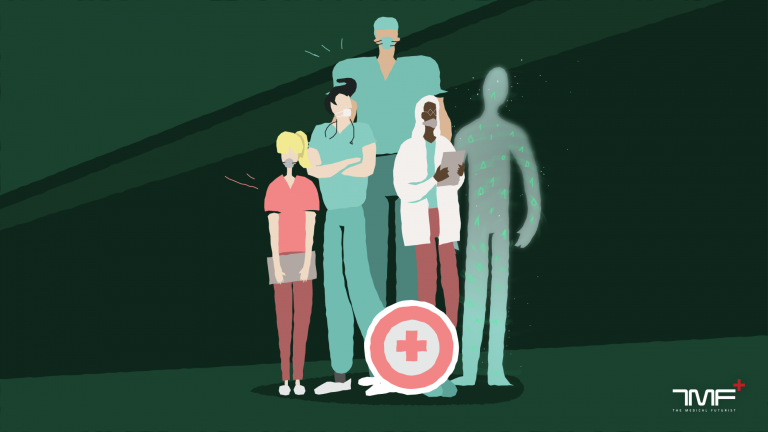The Medical Futurist – Read More
Artificial intelligence-based solutions are changing healthcare for the better. We saw it coming over the past years, and as easy-to-use tools, such as ChatGPT and Midjourney arrived, that initial wave grew into a tsunami. But would this mean that medical professionals are not needed anymore? Of course not. Here are five fundamental reasons why AI won’t replace doctors – and it never will.
The medical community should not fall for the fearmongering around AI. Despite the wide-scale automatisation and digitalisation, humans will always be needed for specific tasks and, according to some studies, the use of robots and AI could even lead to expanded employment and increased wages. But the fear of technology is there, from artificial intelligence taking the place of doctors in various specialties, and robots surpassing surgeons’ skills to taking jobs in pharma.
According to a quote that has now become a classic, “AI will be bigger than all other tech revolutions, and robots are likely to replace 50 percent of all jobs in the next decade,” as venture capitalist Kai-Fu Lee told CNBC a while ago. Although we still have 3 years from the predicted decade, it is unlikely that a change of such magnitude is going to happen in this timeframe.
Silicon Valley investor Vinod Khosla said that “machines will substitute 80 percent of doctors in the future in a healthcare scene driven by entrepreneurs, not medical professionals.” Prof Geoffrey Hinton, the godfather of neural networks, once said that it’s “quite obvious that we should stop training radiologists” as image perception algorithms are very soon going to be demonstrably better than humans. Radiologists are, he said, “the coyote already over the edge of the cliff which hasn’t yet looked down.”
I don’t think so.
Artificial intelligence-based solutions will eliminate the need for human labour and will replace human resources in medical jobs that people didn’t like anyway. Administration. Or medical coding. And disinfecting hospital spaces. Offering telehealth solutions. And smart algorithms are also there to supplement professionals’ tasks in many fields, like diagnostics, image analysis and decision support, hospital resource or clinical workflow optimisation, forecasting, drug discovery and precision medicine.
Healthcare will need humans in the future
Don’t get me wrong, AI will be visibly present in healthcare in the next 10-15 years. We already see good examples, like the sepsis watch algorithm that cut sepsis mortality rates by nearly 30%, or skin cancer detection with near-perfect accuracy lending a hand to dermatologists, or the algorithm that predicts atrial fibrillation 30 minutes before onset allowing time for preemptive intervention.
AI will transform what it means to be a doctor; some tasks will disappear, while others will be added to the work routine. However, there will never be a situation where the embodiment of automation, either a robot or an algorithm, will take the place of a doctor.
Let me tell you five reasons why.
1) Empathy cannot be replaced
Even if the array of technologies offered brilliant solutions, it would be difficult for them to mimic empathy. Why? Because at the core of compassion, there is the process of building trust: listening to the other person, paying attention to their needs, expressing the feeling of understanding and responding in a manner that the other person knows they were understood.

At present, you would not trust a robot or a smart algorithm with a life-altering decision; maybe not even with a decision of taking a painkiller or not, for that matter. We don’t trust machines in tasks where they are better than humans – like taking blood samples. We need doctors holding our hands while telling us about a life-changing diagnosis, their guidance through therapy, and their overall support. An algorithm cannot replace that.
2) Physicians have a non-linear working method
There was an episode in House M.D. where the team couldn’t figure out how a young boy could have been poisoned. They considered many options: drugs, food poisoning, pesticide poisoning. For every possible diagnosis, they suggested a different treatment option. Each made the patient worse – until they figured out, by accident, that the boy picked up a phosmet, a type of insecticide from the jeans he bought from a street vendor who kept the trousers in a truck. The boy didn’t wash the pants before wearing them, that’s how his skin could absorb the poison.
No algorithm could have made such a diagnosis. Data, measurements, and quantitative analytics are crucial parts of a doctor’s work. It will be even more critical in the future. Setting up a diagnosis and treating a patient are not linear processes. It requires creativity and problem-solving skills that algorithms and robots will never have.

Patients and their lifestyles vary to the degree that people differ. Diseases have the same features. Thus, no case is the same; every one of them requires the attention of human physicians. Until the emergence of complex, digital solutions, doctors translated data from simple medical devices into medical decisions. In the future, the task will be the same – they will only use more complicated technologies.
3) Complex digital technologies require competent professionals
More and more sophisticated digital health solutions will require qualified medical professionals’ competence, no matter whether it’s about robotics or AI.
The human brain is so complex and able to oversee such a vast scale of knowledge and data that it is merely not worth developing an AI that takes over this job – the human brain does it so well. It is more worthwhile to program those repetitive, data-based tasks, and leave the complex analysis/decision to the person. So we’re not saying it’s not possible; we’re saying it’s far-fetched and not worth it.

No robot or algorithm could interpret complex, multi-layered challenges – involving the psyche. While they will provide the data, interpretation will always remain a human territory.
4) There will always be tasks algorithms and robots can never complete
Physicians, nurses, and other medical staff members have plenty of cumbersome, monotonous, and repetitive tasks to complete every day. A study says that in the United States, the average doctor spends 8.7 hours per week on administration. Psychiatrists spent the highest proportion of their working hours on paperwork (20.3%), followed by internists (17.3%) and family/general practitioners (17.3%). These types of tasks and procedures can be automated – and they should be.
However, there are responsibilities and duties which technologies cannot perform. While AI can sift through millions of pages of documents in seconds, it will never be able to do the Heimlich maneuver. There will always be tasks where humans will be faster, more reliable – or cheaper than technology.
5) It has never been tech vs human
The consistent and constant enemy image building should stop once and for all. It has never been technology versus humans since technological innovations always serve the purpose of helping people. Collaboration between humans and technology is the ultimate response.
A study for identifying metastatic breast cancer through deep learning shows something similar. When the deep learning system’s predictions were combined with the human pathologist’s diagnoses, the image classification and the tumor localization score increased significantly. Moreover, the human error rate decreased by 85 percent. The findings show that artificial intelligence and humans are the most potent when they cooperate.
Chess is a great example. It was believed to meet its demise following Garry Kasparov’s defeat by a supercomputer. However, the opposite has happened. Today, over 600 million people engage in daily chess, and AI has become an indispensable tool for players, enthusiasts, and coaches alike.
AI has demonstrably enhanced chess by creating a more competitive, popular, and ultimately, more effective environment. AI has transformative potential in healthcare as well, where its adoption promises similar advancements.
Imagine what healthcare could be capable of if the creativity and problem-solving skills of humans were combined with the infinite computing power and cognitive resources of technology. This option is already here. We just need to embrace it.
If you want to know more about how artificial intelligence is changing healthcare as we speak, get The Medical Futurist’s Guide To Artificial Intelligence In Healthcare on Leanpub now or enroll in one of our online courses.
|
At The Medical Futurist, we are building a community for making a bold vision about the future of healthcare reality today. If you’d like to support this mission, we invite you to join The Medical Futurist Patreon Community. A community of empowered patients, future-oriented healthcare professionals, concerned health policymakers, sensible health tech developers, and enthusiastic medical students. If there were ever a time to join us, it is now. Every contribution, however big or small, powers our research and sustains our future. Click here to support The Medical Futurist from as little as $3 – it only takes a minute. Thank you. |
The post 5 Reasons Why Artificial Intelligence Won’t Replace Physicians appeared first on The Medical Futurist.





